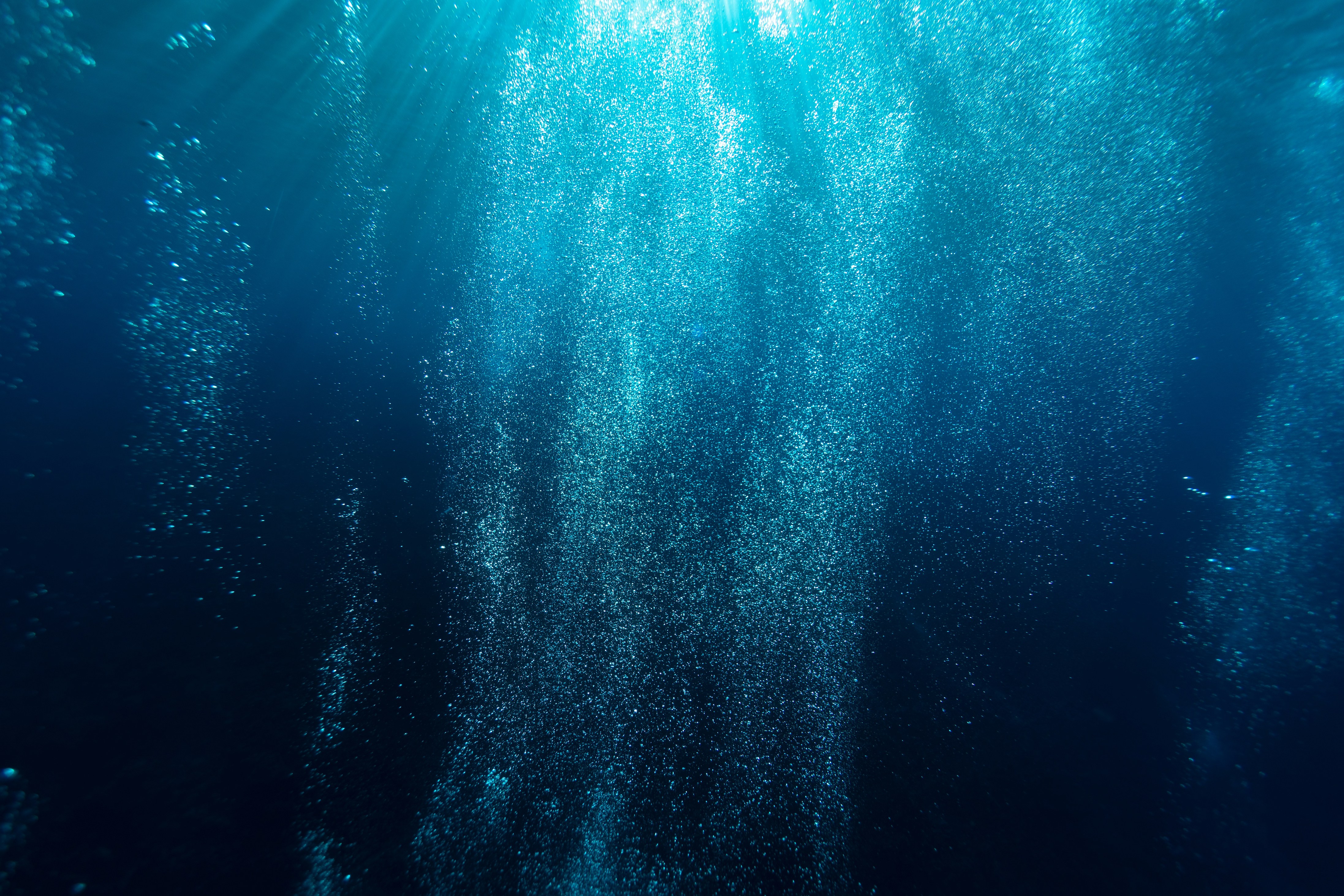90% of marine life lives where the light reaches— so what happens as it begins to fade?
Just below the ocean’s surface, the sun’s rays break to illuminate seemingly infinite deep blue — here, sunlight powers life. By around 200 metres down, the very last drops of sunlight vanish — this region, known as the photic zone, is home to 90% of all marine life. But now it’s getting darker.
Alarmingly, new research reveals that as the ocean darkens, the photic zone is shrinking. This will have profound ecological impacts across global oceans.
Over the last 20 years, scientists have reported that coastal surface waters are changing colour. Run-off from land, causing nutrient buildup, is fuelling large numbers of plankton blooms, such as algae. This boom in blooms reduces the amount of light penetrating surface waters below, causing coastal photic zones to darken and shrink in depth.
Now, researchers have found this process is not only limited to coastal regions, but is globally affecting “large swathes of the open ocean”, the authors write in the new study published in Global Change Biology.
Marine biologists, Thomas Davies and Tim Smyth, revealed that over the last 20 years, more than a fifth of the global ocean has darkened. By assessing changes in ocean colour data from the last 20 years, they modelled the impact of these changes on the depth of our ocean’s photic zone today — in other words, how far down light reaches.
Concerningly, their analyses show widespread impacts across major oceans, linked not only to nutrient loading but also to warming global temperatures.
Between 2003 and 2022, they found a reduction of 50 metres or more for 9% of the global ocean’s photic zone. Whilst in some regions, sunlight now fades 100 metres shallower than it used to. This represents “one of the largest losses of habitat on the planet”, writes Smyth which encompasses the ocean’s most productive region. Impacting major fish stocks, carbon budgets, and diverse aphotic marine communities.
Beyond primary production, changes to photic zone depth could also disrupt critical ecological processes that depend on light from the sun and moon. For instance, corals depend on sunlight to produce energy and are also very sensitive to changes in moonlight to trigger their mass spawning event, which occurs only once a year. For sessile species, like corals, which aren’t able to vertically migrate as their habitat darkens, ocean darkening will have profound implications.
Other light-dependent ecological processes that may be afflicted include visually guided predator-prey relationships and communication, the timing of reproductive stages and species’ migrations. Not least, the vertical migration of zooplankton — the largest daily mass migration of biomass on the planet, which globally drives ocean nutrient cycling.
Davies and Smyth suggest the next challenge involves identifying the precise drivers of ocean darkening on smaller, regional scales where nutrient and sediment loading can be more variable.
Efforts to monitor and address ocean darkening will be essential to avoid severe knock-on effects to entire marine food webs, commercial fish stocks and the global carbon budget.







